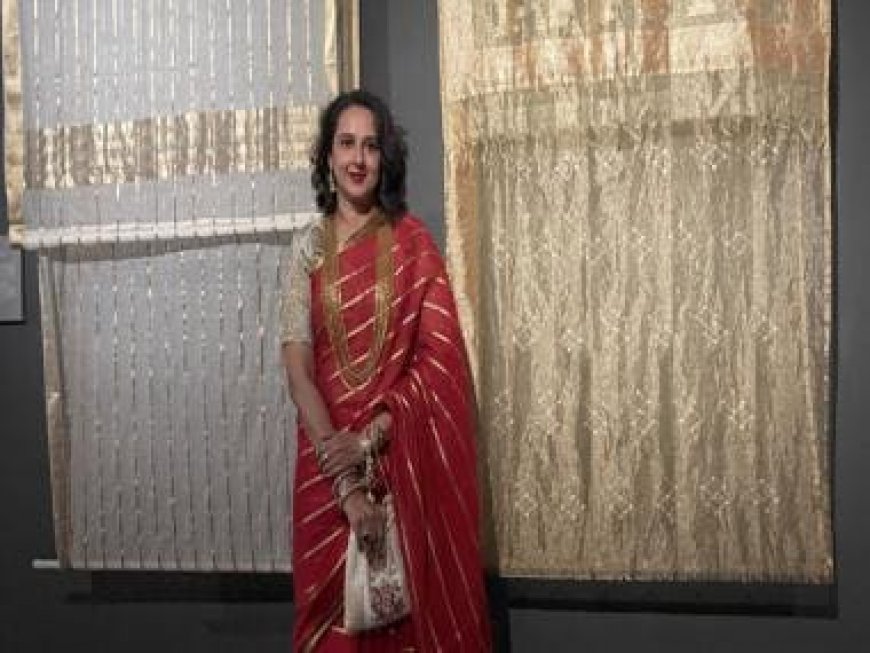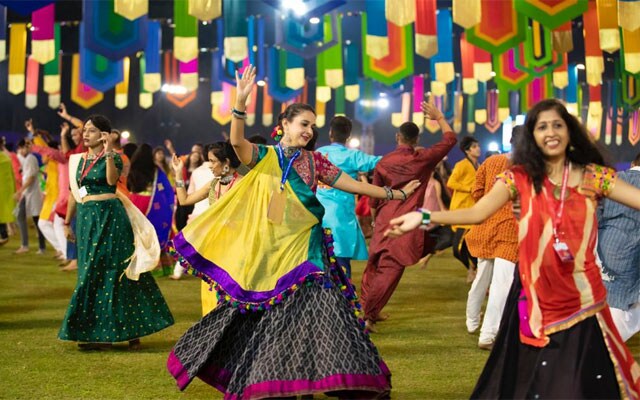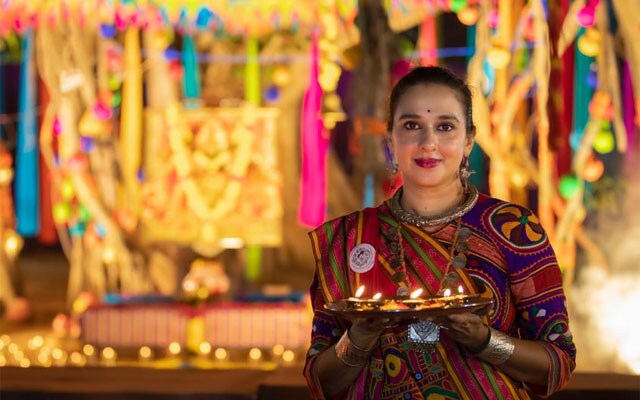Radhikaraje Gaekwad of Baroda is India's most progressive Maharani
Radhikaraje Gaekwad of Baroda is India's most progressive Maharani

THERE ARE royals and there are royals. In India, the Gaekwads of Baroda were among the largest and wealthiest of its princely states thanks to its cotton business, plus rice and wheat farming. Their home, the Lukshmi Vilas Palace, is famously the largest private residence in the world, four times the size of Buckingham Palace.
Its complex is 500 acres in size and at the time of its building, in 1890, the Indo-Saracenic style building had modern amenities like European interiors and elevators.
It is currently the home of Radhikaraje Gaekwad, 44, married to Samarjitsinh Gaekwad, the scion of Maharaja Ranjitsinh Gaekwad. Radhikaraje is a great lover and wearer of Indian textiles, hoping to revive the gorgeous Baroda Shalu saris, a delicate gossamer ek-taar zari weave commissioned by the royal family to Benaresi weavers. She is also archiving the art and jewels, especially the renowned Baroda pearls, of the Gaekwad family for the first time. And bringing much game-changing inclusion to Baroda by inviting local eunuchs and trans folk into the mainstream.

Radhikaraje herself hails from nearby Wankaner. Her father was the Maharaja Dr Ranjitsinh of Wankaner who famously gave up his royal privileges and became an IAS officer. Radhikaraje says she traveled in Delhi’s DTC buses and was raised like any ordinary citizen. “My grandfather, the maharaja of Wankaner, was born in 1938. But he grew up at the time India was a democratic company. He looked into the future and told his children that they had to find their own fortune, and contribute to India in newer ways. He was keen that my father use his privileges and his vocation for a new India. So we had a rather egalitarian working-class life and I am very grateful for it. During the holidays we would go home to Wankaner and the Bentleys and Buicks, so I loved and thrived in both circumstances. And both taught me much, instead of having just one life and having blinkers on for what is beyond it. In Wankaner, I began to appreciate art, craft, glassware, and jewels, but in an IAS family, I saw women from all over wear tanchois, paithanis and kanjeevarams,” she smiles. She even worked at the Indian Express newspaper for two years, writing on fashion.
Soon enough, an arranged marriage set her off to Baroda. “I knew the Gaekwad family was among the most historic but I hadn’t seen the Lukshmi Vilas Palace, or knew much about them. There was no Google at the time. Besides, the Godhra riots were taking place at the time of our pheras, so everything was very low-key,” she says.

She married at a Lutyens’ residence in New Delhi with several former royals attending, “including my grandfather who was nearly 100 years old at the time”. It was a traditional mix of Maratha and Rajput wedding. “I wore a poshak, a Rajput-style lehenga, and then changed into a tissue chanderi my mother-in-law gave me for my bidaai. I even wore the Maharashtrian nath. Everyone sat around and witnessed the wedding,” she remembers.
But the train stations were empty. Her silverware and large trunks had to travel back to Baroda by train, but the stations were desolate. The couple was moved to Ananda for a short while, and instead of a gold chariot, Radhikaraje and Samarjitsinh Gaekwad of Baroda were driven home in a car with a cavalcade of police vehicles accompanying them. “I came into an empty town in the throes of a riot,” she says.
“I discovered the house and what it stood for only later. My husband Sam and my mother-in-law let me find my feet on my own. I loved it, it is a beautiful house and I had previously seen this sort of art only in museums or magazines, especially all the Raja Ravi Varmas. The house was a process of exploration indeed,” she recalls.
The Lukshmi Vilas Palace was also mired in litigation for almost two decades, when the family finally settled the dispute in 2013 and the grand home went to Samarjitsinh. “My husband is still running it, and we have a large banquet facility and a 10-hole golf course. A part of the palace is still open to the public for viewing. But other than that we live here with our two daughters,” Radhikaraje says. Padmajaraje is 17 and going to the UK for her A levels, while Narayaniraje is 15 and in Class 9 in Baroda itself.

The family hopes to turn it into a hotel soon, as they feel that is its future.
Radhikaraje is busy putting together archives of the family’s history. There are none for the Baroda shalu for example, or very little of their famous pearls and rare stones. The gorgeous Baroda pearl carpet, made of pearls, diamonds, rubies and emeralds, was commissioned by an ancestor Khanderao Gaekwad and was to be sent to the Prophet’s tomb in Medina as a gift, but the maharaja died before that.
Radhikaraje is also quite the culture advocate. She started a garba, a Gujarati-style community dance, at the palace grounds in 2019 that included transgenders dancing and even taking care of the temple. “Baroda has a rich history of the garba, which is more religious and traditional unlike the Ahmedabad and Surat variations. I wanted to talk about this aspect of culture and start a fundraiser. I wanted to stand shoulder to shoulder with the trans community and sort of give them the validation they needed. We even had Rani Kohenur, Sushant Divgikar perform ‘Pari hoon main’ for us on stage, it is now an anthem for the community,” she smiles. She is also opening a Garba Cafe at the Maharani Chimnabai Stree Udyogala, a 100-year-old charity centre, which will be run by transgenders. And training local women via the Udyogalaya to be school-van drivers to incidents of sexual abuse are minimised.
The new-age Gaekwads are determined to raise their daughters as if they were sons, by which they will probably be the first among the former royals to inherit the legacy. “Of course they have understood that education and financial independence is very important, they need to adjust to all circumstances,” Radhikaraje avers.
Namrata Zakaria is a seasoned writer and editor, and a chronicler of social and cultural trends. Her first book, on late fashion designer Wendell Rodricks’ Moda Goa museum, is due to be published shortly. Zakaria is especially known for her insider’s take on fashion, luxury and social entrepreneurship in India. Her writing is appreciated for shaping opinions, busting myths, making reputations and sometimes breaking the odd career. Zakaria is also involved in putting together philanthropic efforts in the field of economic and environmental sustainability.
Read all the Latest News, Trending News, Cricket News, Bollywood News, India News and Entertainment News here. Follow us on Facebook, Twitter and Instagram.
What's Your Reaction?



























































